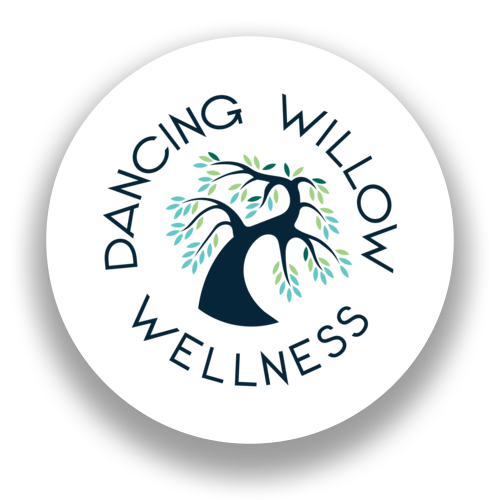Wild Remedies: A Guide to Foraging and Using Medicinal Weeds
Weeds—often dismissed as garden nuisances—are among nature’s most powerful and accessible medicinal plants. Many of the plants we trample underfoot have been used for centuries to heal, nourish, and support health in profound ways. If you’ve ever wondered whether the ‘weeds’ in your yard are actually valuable herbal allies, this guide will set you on the path to discovery.
Bioregional Herbalism: Why Local Plants Matter
Bioregional herbalism is the practice of using plants that grow naturally in your environment. It’s a sustainable, cost-effective, and ecologically responsible way to engage with herbal medicine. Many exotic herbs gain widespread attention for their health benefits, but their local counterparts often provide similar or even superior medicinal properties. Freshness, availability, and a smaller environmental footprint make locally grown and foraged herbs a great choice for personal and community wellness. Learn more about bioregional herbalism and why choosing local plants matters.
Wild Plant Identification: A Beginner’s Guide
Before foraging, it’s crucial to positively identify plants. Some beneficial herbs have toxic lookalikes, making correct identification essential. Start by studying a few easily recognizable plants in your yard or local area. Learning botanical terms, using multiple reference sources, and engaging all your senses—sight, touch, taste, and smell—can help you develop confidence. For a step-by-step approach, check out our guide on wild plant identification.
The Seasons of Weeds: A Year-Round Guide
Many medicinal weeds thrive in different seasons. Knowing when and how to harvest them ensures you capture their peak potency. Below, we explore some of the most useful weeds you can find throughout the year.
Spring: The First Foraged Greens
Spring brings the first wave of nutrient-rich weeds, offering an opportunity to replenish vitamins and minerals after winter.
Chickweed (Stellaria media): This mild, vitamin-packed plant is perfect for salads and teas. It also soothes skin irritation and inflammation. Learn more in What to Do With Weeds – Spring Edition.
Plantain (Plantago major & Plantago lanceolata): Found in nearly every lawn, plantain is a go-to remedy for bites, cuts, and skin irritations.
Dandelion (Taraxacum officinale): The leaves, flowers, and roots are all medicinal, supporting digestion and detoxification.
Stinging Nettle (Urtica dioica): A deeply nourishing herb, nettles are rich in vitamins, minerals, and proteins. They support allergy relief, reduce inflammation, and are excellent for fatigue and blood health. Learn more in In Praise of Stinging Nettles.
Violets (Viola spp.): One of the earliest bloomers, violets are packed with vitamin C and have soothing properties for coughs, inflammation, and skin conditions. They can also be used in culinary creations like teas and vinegars. Explore more in Violets – Gentle Spring Medicine.
Summer: Vibrant Blooms and Powerful Medicines
Summer is when many medicinal weeds reach their peak, offering vibrant flowers and lush foliage packed with healing properties.
Self-Heal (Prunella vulgaris): Once known as “All-Heal,” this plant is excellent for wound healing and sore throats. Discover more in What to Do With Weeds – Summer Edition.
Wild Strawberry (Fragaria vesca): The tiny berries are delicious, but the leaves are also medicinal, helping with digestion and sore throats.
Pineapple Weed (Matricaria discoidea): A wild relative of chamomile, its flowers make a soothing tea for digestion and relaxation.
Fall: Harvesting Roots for Deep Medicine
As plants prepare for winter, they store their energy in their roots, making fall the best time for root harvesting.
Burdock (Arctium lappa): Known for supporting liver health and digestion, burdock root is often used in teas and tinctures.
Chicory (Cichorium intybus): A natural coffee substitute, chicory root also aids digestion and gut health. Learn more about preparing herbal coffee in What to Do With Weeds – Fall Edition.
Dandelion Root: A potent liver tonic, this root can be roasted and brewed into a rich, caffeine-free drink.
Winter: The Hidden Medicines of Dormant Plants
Winter may seem like a quiet time for foraging, but some medicinal treasures can still be found.
Cottonwood Buds (Populus spp.): These resinous buds make a powerful salve for sore muscles and chapped skin. Learn how to make your own in Cottonwood Buds – Winter Medicine.
Evergreens (Pines & Spruces): High in vitamin C, pine and spruce needles make an immune-boosting tea. Find out more in Christmas Tree Tea.
How to Use Weeds for Herbal Remedies
Once you’ve gathered your wild plants, you can prepare them in various ways:
Teas & Infusions: Steeping herbs in hot water extracts their medicinal compounds. Check out The Art of Making Herbal Tea for a step-by-step guide.
Tinctures: Alcohol-based extracts preserve herbs for long-term use.
Salves & Oils: Used for skincare and pain relief, infused oils capture the healing properties of plants like cottonwood buds and plantain.
Edible Preparations: Many weeds, like dandelion greens and chickweed, are nutritious additions to meals.
Ethical and Sustainable Foraging Practices
When foraging, it’s essential to harvest responsibly. Take only what you need, avoid overharvesting, and ensure plants are growing in clean, pesticide-free areas. Leave enough plants behind so they can continue to thrive and support wildlife.
Bringing Herbalism Into Everyday Life
Weeds are more than just garden invaders—they are some of the most powerful and accessible herbal remedies available. By learning to identify, harvest, and use these plants, you can develop a deeper connection to nature and support your health in a sustainable way.
Ready to dive deeper? Explore these guides for more detailed insights:
By embracing the ‘weeds’ around you, you’ll unlock a wealth of herbal wisdom that has been hiding in plain sight all along.
Rebecca






